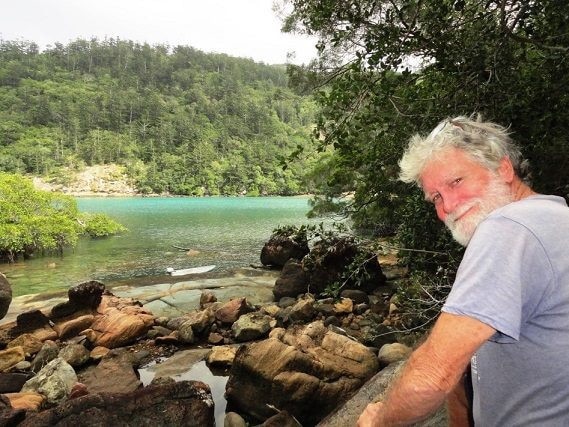Gleeso Confidential: Of course we need to cull crocodiles
How much more blood in the water is needed before there is any change to the crocodile culling laws, asks Peter Gleeson.
Before his death, Andrew Heard warned about the dangers of crocodiles, suggesting they be culled around known hot spots such as Hinchinbrook Island.
Earlier this month, Mr Heard left for a fishing trip in his small dinghy near Hinchinbrook Island and never returned.
His boat, overturned and damaged, was found, as were his remains, in the belly of a 4.5m crocodile.
The Department of Environment and Science “humanely euthanised’’ the two monster crocs suspected to have been involved in the death of Mr Heard.
It was the third crocodile attack in north Queensland in two weeks.
One man was bitten on the head and another on the arm, triggering a fresh debate about whether crocs in north Queensland should be culled to protect humans.
Conservationists and environmentalists argue that culling big saltwater crocs will only make it more dangerous for humans as the smaller reptiles fight for supremacy.

They say educating people of the dangers of crocodile attacks is the answer. Rubbish.
You can educate somebody till the cows come home about crocodiles and their dangers, but when a big monster comes after you in a dinghy – as was the case with Mr Heard – no amount of “education’’ or knowledge is going to help.
And what is this fascination with “humanely euthanising’’ crocodiles suspected of killing people?
Talk about shutting the gate after the horse has bolted.
The key to providing greater protection for humans from crocodile attacks is to cull the explosion in numbers.
Croc-infested waterways in north Queensland go hand-in-hand with the rains and barramundi season.
They are more aggressive as they move around frequently.
In 2009, the government ran a research project where they put GPS trackers on crocodiles, tracking one beast from Cooktown to Magnetic Island, off the Townsville coast.
That crocodile – known as Whitey – then stalked the island for days, terrorising locals, before being captured and sent north again.
These are predatory killing machines and numbers must be kept under control or there will be more fatalities.
On Queensland beaches, drum lines and nets are deployed to reduce the chances of shark attack.
Every year, hundreds of big great whites and tiger sharks are hauled from the ocean after being trapped by the drum lines.
When the drum lines and nets are taken away, as they have been in the Whitsundays in recent years, the shark attack rate skyrockets.
In northern NSW, where greenies have hijacked the shark protection debate, the incidence of shark attack is among the highest in the country.
In Australia, between 1970 and 2020, there were 154 unprovoked croc attacks, with 34 being fatal. Victims usually drown as the crocodile puts them into the “death roll’, keeping them underwater.
With the barramundi season under way, fishermen jump into their tinnies and trawl for fish in the many rivers and estuaries.
Locals say the crocs have been “breeding like rabbits’’ for half a century, after they were recognised as protected species in the 1970s.
They have no fear, ramming boats after becoming accustomed to the sound of outboard motors and tinnies.
Brazen attacks will become more commonplace, they say.
With our tourism industry already smashed by COVID-19 restrictions, the last thing we need is big crocs turning up off our major holiday islands.
How much more blood in the water is needed before there is any change to the crocodile culling laws?


